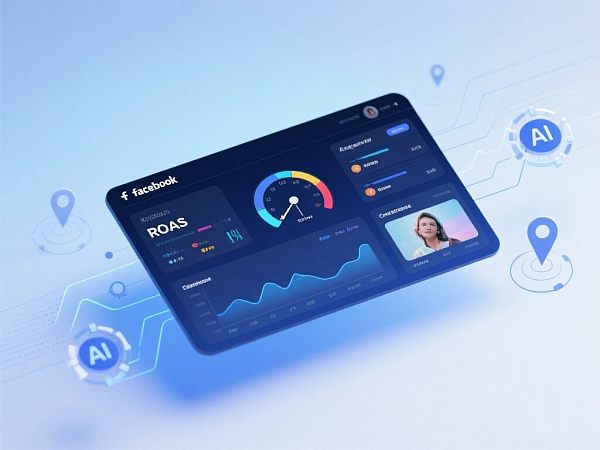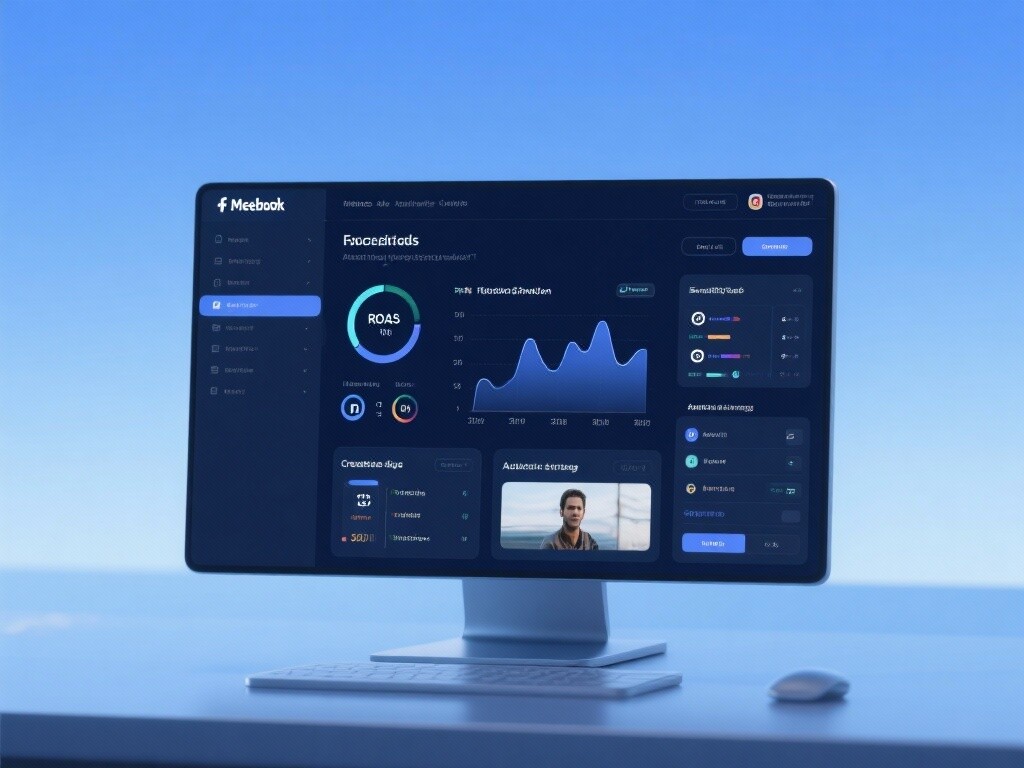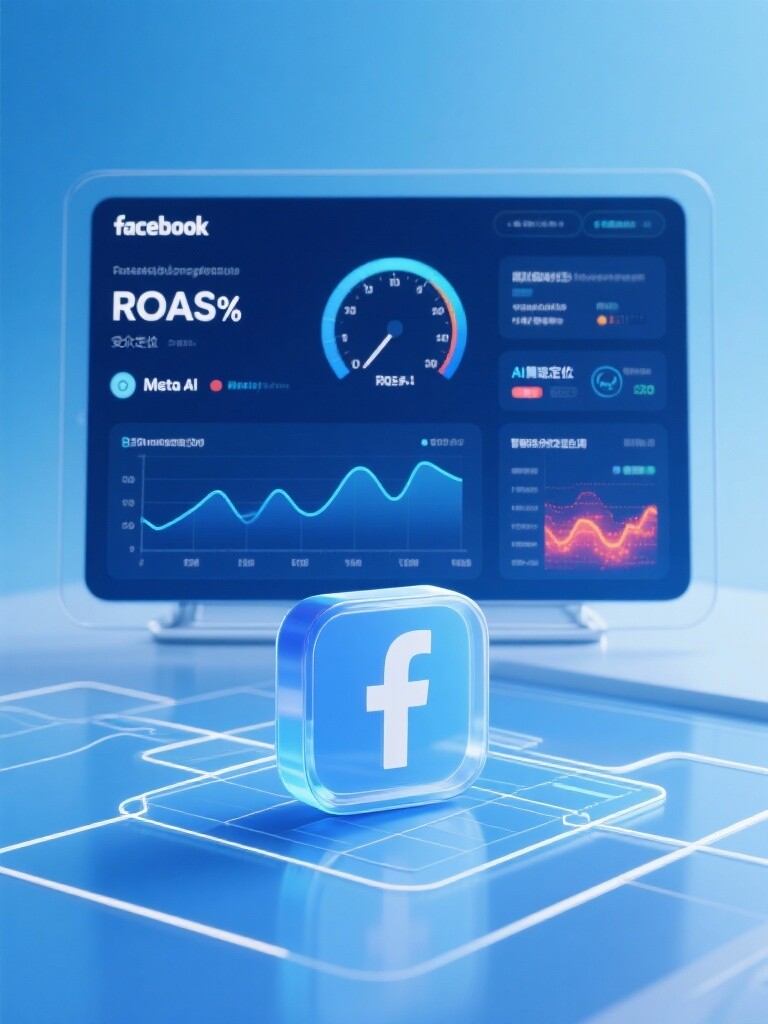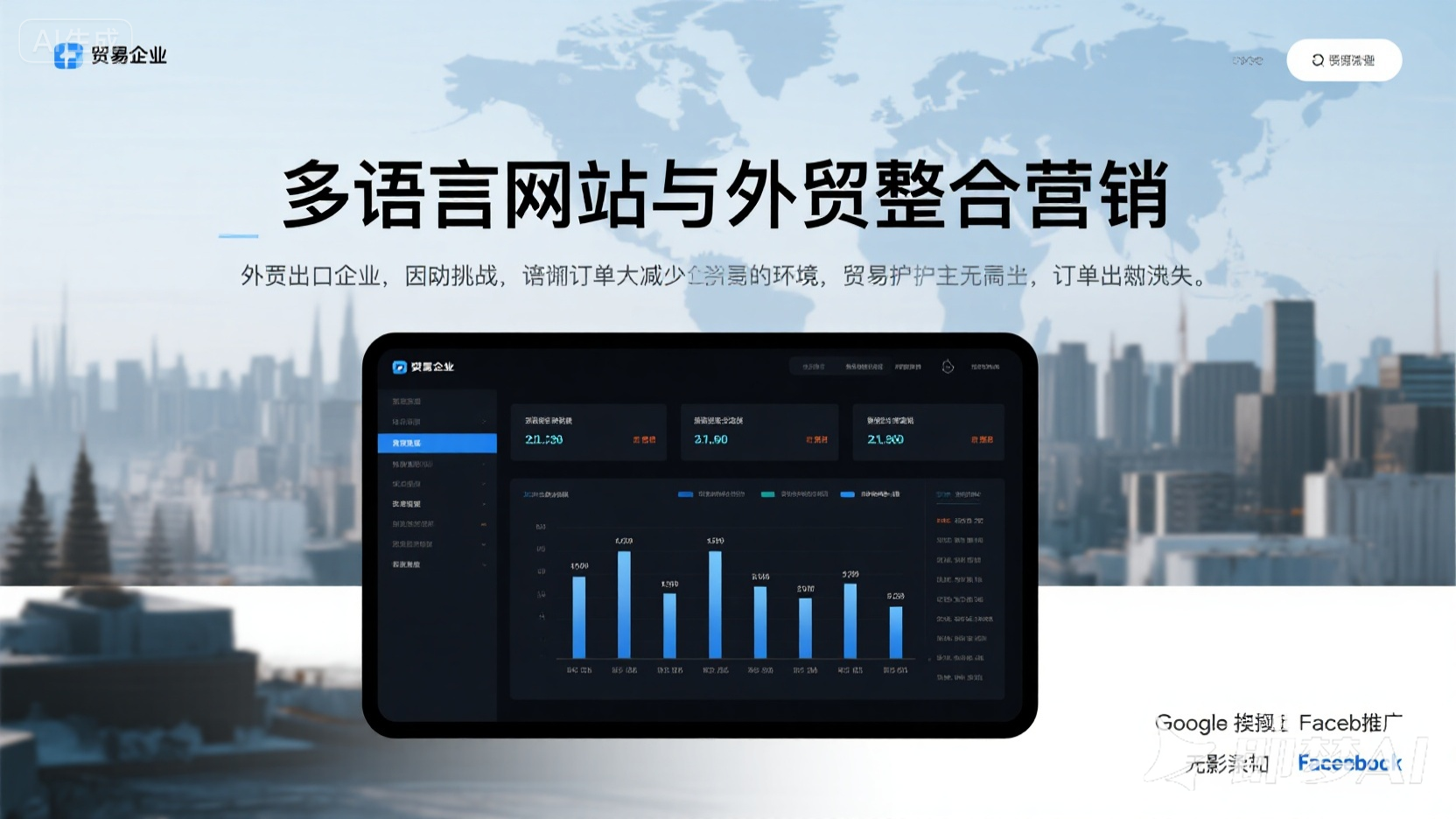Easy Camp Cloud Intelligent Website Construction and Marketing System Platform!
I. Industry Background and the Authoritative Definition of Facebook Ads
1. The Authoritative Definition of Facebook Ads (Meta Ads)
Facebook Ads (Facebook Ads) is a social media advertising platform provided by Meta (the parent company of Facebook, Instagram, Messenger, and Audience Network). It allows businesses to display image, video, or interactive ads to a vast number of active users worldwide through a bid ranking mechanism.
Unlike Google Ads, which primarily captures high-intent search queries, Facebook Ads rely on user interests, behaviors, demographic data, and social interactions for passive recommendations. Its core objective is to stimulate potential needs and guide users into the purchase funnel by leveraging creative materials and precise targeting while users browse their information feeds in a relaxed state.
2. The Irreplaceability of Global Social Media Traffic
In the new global traffic ecosystem, Facebook/Instagram platforms dominate the stages of “interest discovery” and “brand awareness”. Particularly for D2C e-commerce, consumer brands, and B2B lead generation, Facebook Ads offer unparalleled audience scale and segmentation capabilities, serving as strategic infrastructure for brands to achieve scalable expansion and build customer loyalty.
II. The Evolution of Facebook Ads: From Like-Based Promotion to AI Optimization
The history of Facebook Ads reflects the progression of social media marketing from broadcasting to hyper-personalization and automation, as well as continuous adaptation to data privacy and tracking technology.

1. Early Stage: Broadcasting and Initial Application of Social Graphs (2007-2015)
Ad Formats: Primarily sidebar banner ads and “like-based promotion”.
Targeting Technology: Mainly relied on demographic data and simple page-like interests for crude targeting.
Challenges: Lack of effective conversion tracking; ad objectives often stalled at impressions and clicks, making ROAS difficult to calculate accurately.
2. Introduction of Machine Learning and the Birth of Pixels (2015-2019)
Technological Breakthrough: The official launch of Facebook Pixel, which became the cornerstone of conversion tracking. Pixels feed back behavioral data such as purchases, add-to-cart, and registrations from websites to the ad system.
Algorithm Empowerment: Machine learning algorithms began optimizing bidding and delivery, shifting ad objectives toward achieving the lowest cost per purchase (CCPA).
Scalability Tools: Custom Audiences and Lookalike Audiences became essential tools for high-converting ad sets.
3. Privacy Tightening and the Automation Wave (2020-Present)
Major Challenge: Adjustments to Apple iOS 14.5 privacy policies limited browser-side data tracking, reducing ad attribution accuracy.
Technological Response: Facebook introduced Conversion API (CAPI), encouraging advertisers to send data via server-side connections to improve completeness and reliability.
Automation Dominance: Tools like Advantage+ Shopping Ads and Automated App Ads (AAA) were launched, emphasizing creativity as king and delegating audience exploration and bidding optimization to AI models.
III. The Technical Principles of Facebook Ads: Three Core Engines
Understanding the underlying technical principles of Facebook Ads is key to achieving high ROAS.
1. The Ad Auction System
Facebook’s ad auction is a complex “generalized second-price auction” model. Ad ranking (whether displayed) is determined not by bid price but by total value:
Estimated Action Rate: Meta’s algorithm predicts the likelihood of users taking target actions (e.g., purchases, clicks) after seeing your ad. This is the core of machine learning.
Ad Quality and Relevance: Measures user responses to ad creatives (e.g., CTR, engagement, negative feedback), determining the ad’s “health score”.
Delivery Tip: Ads with high quality, relevance, and CTR can win auctions at lower costs, gaining more impressions.
2. Facebook Pixel and Conversion API (CAPI)
Facebook Pixel (Cornerstone): A code snippet installed on websites to track user behavior and feed data back to Meta. It is the sole “fuel” for AI learning.
Conversion API (CAPI) (Future): A solution for browser-side tracking limitations. It connects directly to Meta’s servers via server-side to send conversion events.
Technical Advantage: CAPI ensures complete, accurate, and real-time data feedback, maintaining precision for smart bidding and LAL audience models.
3. The “Learning Phase” and Data Volume Requirements of Machine Learning
Learning Phase: Every new ad set requires the algorithm to explore and learn optimal audiences, delivery times, and placements during its initial launch.
Data Requirements: To stabilize and optimize delivery, the algorithm needs at least 50 target conversion events within 7 days.
Delivery Tip: Set initial budgets high or optimize for upper-funnel events (e.g., “add to cart”) to ensure rapid data acquisition.
IV. Facebook Ad Delivery Techniques: High ROAS Strategies
Successful Facebook ad delivery is a scientific combination of audience, creativity, and budget.
1. Precision Audience Targeting Techniques
Lookalike Audiences (LAL) Technique: The most effective cold-start audience. Creating 1%~3% LAL audiences based on high-value customers (LTV or high ARPU) far outperforms manual interest targeting.
Broad Targeting: With sufficient budgets and accurate CAPI data, try setting only geography and gender, letting AI auto-explore the best audiences—this is the latest trend in automation.
2. High-Conversion Creative Production and Testing
Creativity is the “primary element” of Facebook ad success. Delivery techniques should revolve around these core principles:
3-Second Rule: Video ads must capture user attention within the first 3 seconds using unexpected, questioning, or pain-point displays.
Native and UGC Feel: Create materials that “don’t look like ads”, leveraging UGC (user-generated content) or influencer reviews to boost trust and stopping power.
Dynamic Creative Optimization (DCO): Allow algorithms to auto-combine multiple headlines, descriptions, images/videos, and CTAs to find the best-performing mix for personalized delivery.
A/B Testing Technique: Change only one variable (creative, copy, audience) per test and ensure sufficient conversion data for scientific judgment.
3. Automation and Budget Management (CBO/Advantage+)
CBO (Campaign Budget Optimization): Once enabled, the system automatically allocates budgets to the best-performing ad sets. Trust the algorithm and avoid frequent manual interference.
Advantage+ Shopping Ads: A fully automated ad series where advertisers only need to provide target ROAS and creative materials. AI then finds the optimal conversion paths within Meta’s ecosystem—ideal for e-commerce sellers.
V. Advanced Applications and Scenarios of Facebook Ads
VI. EasyProfit: Your Facebook Ad Delivery and ROAS Growth Expert
Professional Facebook ad delivery requires technology (CAPI), strategy (LAL), and creativity (UGC) as a unified whole. EasyProfit specializes in helping businesses achieve sustainable, efficient, and predictable revenue growth through Facebook Ads in the new global traffic ecosystem.
CAPI Deployment and Data Integrity: Our technical team provides deep integration of Conversion API (CAPI), ensuring maximal data accuracy to supply optimal “fuel” for your AI learning.
ROAS-Driven Optimization: We focus not on clicks or impressions but on optimizing and executing target ROAS/CPA smart bidding strategies to ensure every spend converts into observable profits.
LAL Seed Mining and Testing: Based on your CRM and LTV data, we help build multi-dimensional, high-value lookalike audiences and design scientific audience segmentation and A/B testing strategies.
High-Conversion Creative Guidance: Tailored to native content features of Facebook and Instagram, we provide high-completion, high-CTR video and image creative models to help you quickly break through the algorithm’s “creative bottleneck”.






